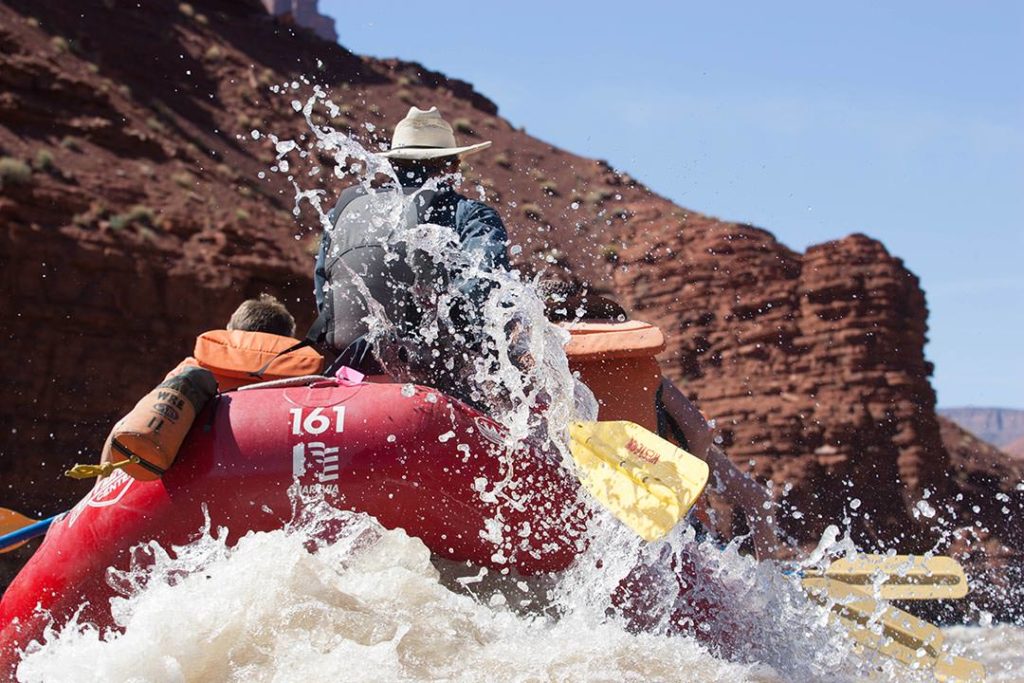
Editor’s note: This story is a part of a series that explores the lasting impacts of the COVID-19 pandemic and how things have changed on and off campus.
The tourism industry is one of the most lucrative in Utah, with visitors coming from all over the world to experience the state’s natural beauty and outdoor recreation. COVID-19 has hit Utah tourism hard, forcing workers in the industry to find creative ways to adapt.
Vicki Varela, managing director of the Utah Office of Tourism, said Utah tourism — normally a $10 billion industry — will see a serious dip in revenue this year.
“The tourism industry depends on people going places, and nobody has been going anywhere since March,” she said.
International travel bans are a significant contributor to this, Varela said. International visitors make up only around 10% of yearly tourists, but they tend to stay longer and spend more money than American visitors from other states.
Utah residents have been making more day trips to their state’s classic tourist locations, Varela said, but they typically don’t pay for hotels or souvenirs and therefore don’t contribute much to the tourism economy.
Moab Adventure Center CEO Brian Merrill has seen that trend first hand this season. He said Moab is getting more visitors from Utah and other states within driving distance than usual, while tourists from farther away have had to postpone their trips until 2021 or 2022.
According to Varela, the tourism industry’s revenue decrease will be felt across the state. She said the $10 billion spent annually by tourists translates into about $1.3 billion in tax revenues. Without visitors, these taxes would have to come from other sources, such as property or sales taxes, meaning the tourism industry saves each Utah household about $1,300 annually in tax relief.
“By any measure, the tourism industry is the most devastated industry in the state,” Varela said.

She added she felt optimistic, however, that the industry would soon make a full recovery, especially as various tourist locations adapt to pandemic circumstances.
“There’s lots of reinventing going on, and I think some of these creative ideas will last even after COVID,” she said. “There’s a lot of resourcefulness that has to occur in a time of crisis, and you learn things and change the way you approach things.”
Varela mentioned the Utah charter bus company Le Bus as an example of creative adaptation. Le Bus usually carts large tour groups around the state; now, the company is using smaller shuttles to take groups of 20 or fewer up Cottonwood Canyon so they can ride their bikes back down.
The Moab Adventure Center has adapted by offering private tours. Where its river rafts, Hummers and aircraft are usually intended for larger groups, the center has advertised its private tours in which small groups can request their vehicle to themselves so as not to be exposed to other tourists, Merrill said.
In cases where it must combine smaller groups, Merrill said the company has lowered the maximum capacity for its various tour vehicles so that people can stay appropriately spaced apart and are requiring people to wear masks within vehicles.
These virus-safe tour options have received a largely positive response from the community, Merrill said.
“People are very grateful that we’re open and that we’re providing an opportunity for them to get away from the stress of the regular world, particularly now that they have the added stress of the COVID-19 virus,” he said.
Varela said the option to experience nature safely is especially important now that people have been isolated for so long.
“It is so wonderful that Utahns are getting out and savoring outdoor recreation because it’s really a lifeline for most of us through this,” she said.





